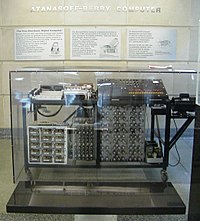
The Use of Ratings of Perceived Exertion in Children and Adolescents: A Scoping Review
Sign Up to like & getrecommendations! Published in 2020 at "Sports Medicine"
DOI: 10.1007/s40279-020-01374-w
Abstract: In adults, ratings of perceived exertion (RPE) can be used to predict maximal oxygen uptake, estimate time to exhaustion, assess internal training load and regulate exercise intensity. However, the utility of RPE in children is… read more here.
Keywords: scoping review; review; ratings perceived; exercise ... See more keywords

Perceived exertion responses to wheelchair propulsion differ between novice able-bodied and trained wheelchair sportspeople.
Sign Up to like & getrecommendations! Published in 2019 at "Journal of science and medicine in sport"
DOI: 10.1016/j.jsams.2019.10.012
Abstract: OBJECTIVES To investigate peripheral (RPEP) and central (RPEC) Ratings of Perceived Exertion during wheelchair propulsion in untrained able-bodied (AB) participants, and trained wheelchair rugby athletes with and without cervical spinal cord injury (CSCI). DESIGN Cross-sectional… read more here.
Keywords: perceived exertion; wheelchair propulsion; rpec; csci ... See more keywords

Validity and reliability of the ‘Isometric Exercise Scale’ (IES) for measuring ratings of perceived exertion during continuous isometric exercise
Sign Up to like & getrecommendations! Published in 2021 at "Scientific Reports"
DOI: 10.1038/s41598-021-84803-8
Abstract: Isometric exercise (IE) interventions are an effective non-medical method of reducing arterial blood pressure (BP). Current methods of prescribing and controlling isometric exercise intensity often require the use of expensive equipment and specialist knowledge. However,… read more here.
Keywords: exercise intensity; exercise scale; isometric exercise; ratings perceived ... See more keywords

Which instructional models influence more on perceived exertion, affective valence, physical activity level, and class time in physical education?
Sign Up to like & getrecommendations! Published in 2019 at "Educational Psychology"
DOI: 10.1080/01443410.2019.1613516
Abstract: Abstract The aim of this study was to examine the effects of two different instructional models (i.e. direct instructional model (DIM) and tactical games model (TGM)) with primary education students. Perceived exertion, affective valence, physical… read more here.
Keywords: instruction; time; level; education ... See more keywords

Respiratory responses and rating of perceived exertion of severely obese adolescents during continuous and intermittent graded walking protocols: Application to cardiorespiratory field tests
Sign Up to like & getrecommendations! Published in 2020 at "Journal of Sports Sciences"
DOI: 10.1080/02640414.2020.1738701
Abstract: ABSTRACT During 20 m shuttle tests, obese adolescents may have difficulty achieving maximum cardiorespiratory performance due to the presence of braking-relaunch phases (BRP). Nineteen obese adolescents aged 15.2 ± 1.5 years (body mass index [BMI]… read more here.
Keywords: rating perceived; intermittent; walking; obese adolescents ... See more keywords

Effects of branched chain amino acids, l-citrulline, and alpha-glycerylphosphorylcholine supplementation on exercise performance in trained cyclists: a randomized crossover trial
Sign Up to like & getrecommendations! Published in 2023 at "Journal of the International Society of Sports Nutrition"
DOI: 10.1080/15502783.2023.2214112
Abstract: ABSTRACT Background Nutrition plays a key role in training and athletic performance and dietary supplements can make a small, but potentially valuable, contribution to achieving peak athletic performance. This study is the first to investigate… read more here.
Keywords: perceived exertion; time; supplementation; test ... See more keywords

A lab-based comparison of differential ratings of perceived exertion between a run and jump protocol involving low or high impacts on the lower extremities.
Sign Up to like & getrecommendations! Published in 2022 at "European journal of sport science"
DOI: 10.1080/17461391.2022.2060136
Abstract: ABSTRACTThe rating of perceived exertion method allows to describe training intensity in a single value. To better understand the underlying components, the separate rating of perceived breathlessness (RPE-B) and leg-muscle exertion (RPE-L) has been proposed.… read more here.
Keywords: lower extremities; impacts lower; perceived exertion; low impact ... See more keywords

Does biologically categorised training alter the perceived exertion and neurmuscular movement profile of academy soccer players compared to traditional age-group categorisation?
Sign Up to like & getrecommendations! Published in 2022 at "European journal of sport science"
DOI: 10.1080/17461391.2022.2117090
Abstract: The individual response to load is multifactorial and complicated by transient and temporal changes in biological maturation. The period surrounding peak height velocity exposes potentially 'fragile' individuals to systematic, age-related increases in training loads. Bio-banding… read more here.
Keywords: soccer players; perceived exertion; training; age ... See more keywords

Influence of Exogenous β-Hydroxybutyrate on Walking Economy and Rating of Perceived Exertion
Sign Up to like & getrecommendations! Published in 2018 at "Journal of Dietary Supplements"
DOI: 10.1080/19390211.2018.1471562
Abstract: ABSTRACT This study investigates the effect of a supplementary ketone, β-hydroxybutyrate (BHB), on walking economy and ratings of perceived exertion in apparently healthy individuals. In a repeated-measures, crossover design, ten non–aerobically trained participants (three males;… read more here.
Keywords: walking economy; rating perceived; hydroxybutyrate; perceived exertion ... See more keywords

A Deep Learning Approach for Fatigue Prediction in Sports Using GPS Data and Rate of Perceived Exertion
Sign Up to like & getrecommendations! Published in 2022 at "IEEE Access"
DOI: 10.1109/access.2022.3205112
Abstract: Monitoring players’ fatigue is essential to maintaining the best performance of players during sports games. The level of fatigue can be measured by the external workload, the aggregated amount of physical activity or internal workload,… read more here.
Keywords: perceived exertion; gps data; rate perceived; fatigue ... See more keywords

Sex- and age-related differences in the rating of perceived exertion after high-intensity rowing exercise during childhood and adolescence.
Sign Up to like & getrecommendations! Published in 2023 at "Psychophysiology"
DOI: 10.1111/psyp.14296
Abstract: The present study aimed to evaluate the effects of age and sex on the rating of perceived exertion (RPE) during high-intensity exercise and determine whether mechanical and physiological parameters could be predictors of RPE during… read more here.
Keywords: perceived exertion; rating perceived; age; high intensity ... See more keywords